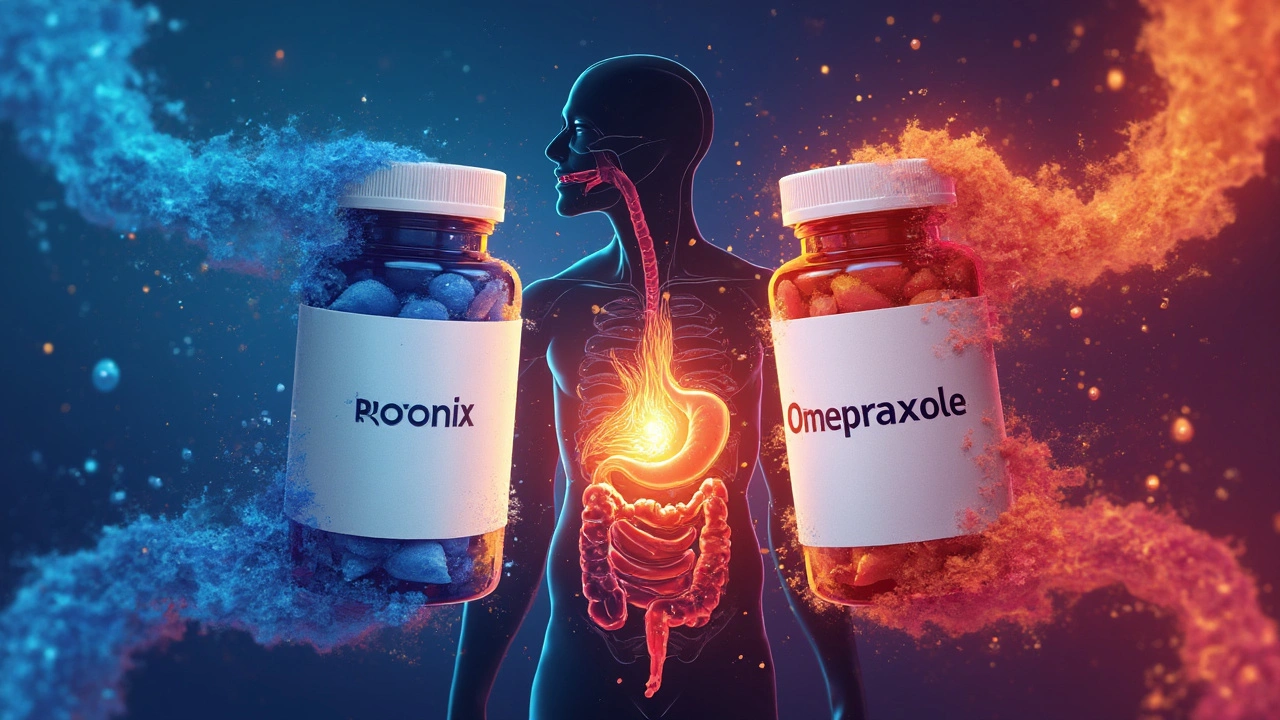Protonix (Pantoprazole) – What It Is and How It Helps You
If you’ve ever wrestled with burning chest pain after a big meal, you’ve probably heard of Protonix. It’s a prescription drug that lowers stomach acid, easing heartburn, acid reflux, and the pain of GERD (gastro‑esophageal reflux disease). The active ingredient is pantoprazole, a member of the proton‑pump inhibitor (PPI) family. By blocking the final step of acid production, it gives your esophagus a break and helps damaged tissue heal.
How to Take Protonix Correctly
Most doctors start you on a 40 mg tablet once a day, usually in the morning before breakfast. Swallow the tablet whole with a glass of water—don’t split, crush, or chew it. If your doctor prescribes a different dose, follow that exactly. For short‑term flare‑ups, a 5‑day course might be enough; chronic GERD often needs a longer stint, sometimes up to 8 weeks.
Stick to the same time each day. Skipping doses can let acid spike back up, bringing back symptoms. If you miss a dose, take it as soon as you remember—unless it’s almost time for your next dose, then just skip the missed one. Don’t double up.
Common Side Effects and When to Call the Doctor
Protonix is generally well‑tolerated, but a few people notice mild issues. The most frequent are headache, stomach pain, nausea, and diarrhea. These usually fade after a few days. More serious, though rare, signs include severe stomach pain, dark stools, or rash. If you feel dizzy, have trouble breathing, or notice swelling in your face or lips, seek medical help right away—these could signal an allergic reaction.
Long‑term use (beyond a year) has been linked to low magnesium levels, higher bone fracture risk, and possible kidney issues. Your doctor may order blood tests if you stay on Protonix for an extended period. Simple steps—like eating calcium‑rich foods and staying active—can help offset bone‑related concerns.
Here are a few practical tips to get the most out of your Protonix treatment:
- Pair with lifestyle changes. Cutting back on caffeine, alcohol, and spicy foods can boost results.
- Avoid lying down right after meals. Give gravity a hand in keeping acid where it belongs.
- Stay hydrated. Water helps dilute stomach acid and keeps digestion smooth.
- Don’t quit abruptly. If you need to stop, your doctor will taper you down to prevent rebound acid production.
Protonix isn’t suitable for everyone. Pregnant or nursing moms should discuss risks with their provider. People with severe liver disease, certain infections, or who take medications like warfarin need special monitoring because pantoprazole can interact with those drugs.
Bottom line: Protonix can be a game‑changer for chronic heartburn and GERD, but it works best when you follow dosing instructions, watch for side effects, and pair it with smart diet and habit tweaks. If symptoms linger after a few weeks, or if you find yourself reaching for over‑the‑counter antacids on top of Protonix, schedule a follow‑up. Your doctor can adjust the plan, explore alternative PPIs, or investigate deeper issues.
Feel free to ask your pharmacist any lingering questions—especially about drug interactions or what to do if you miss a dose. With the right approach, you can keep acid reflux in check and enjoy meals without the constant burn.

